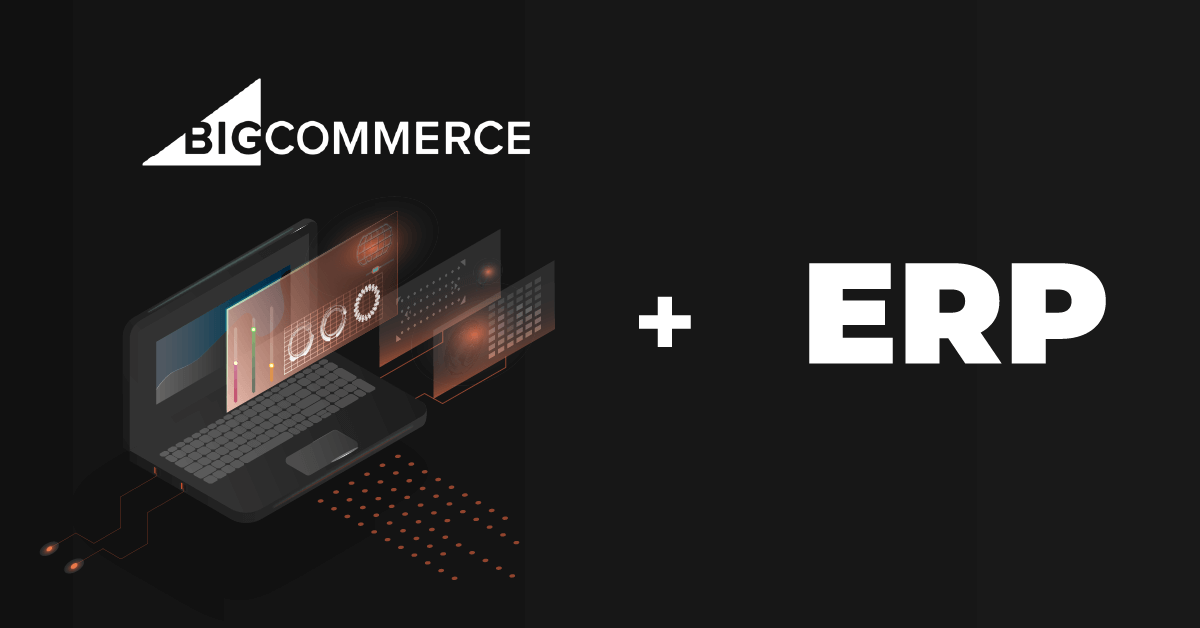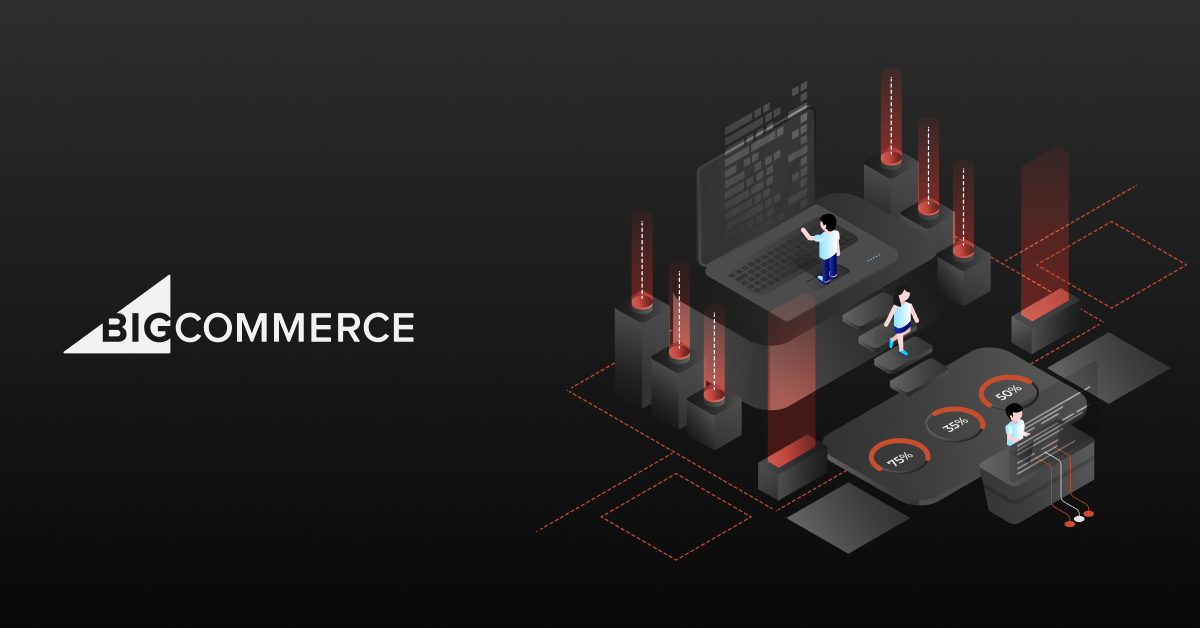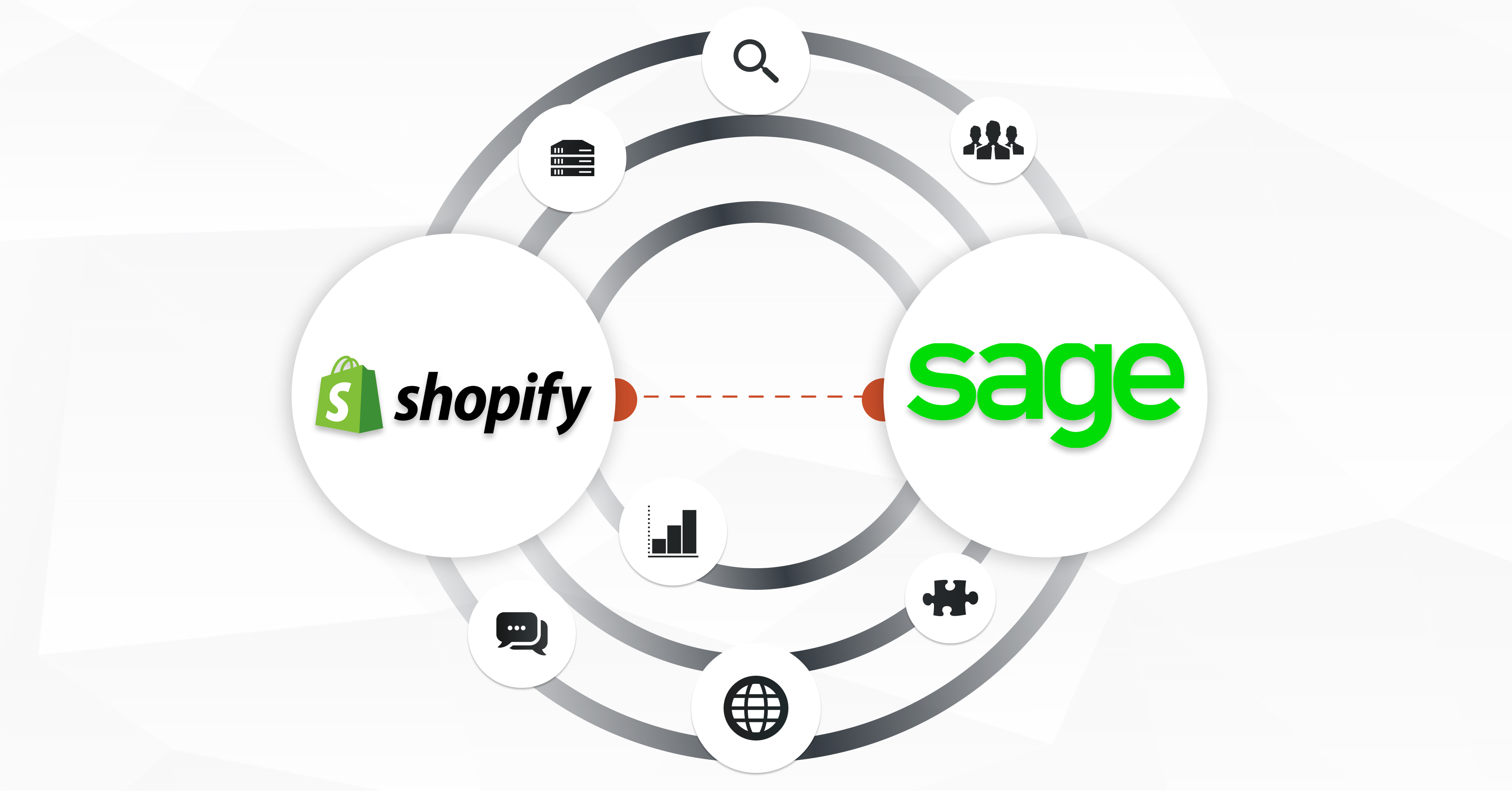Integration connects, links, or synchronizes multiple business applications and systems across the organization to enable automatic data transfers between these systems, eliminating any human intervention.
Integrating BigCommerce with ERP means that your BigCommerce store and ERP platform communicate automatically without switching between the systems. Successful integration will give you visibility and complete control over data, streamline your sales environment, and elevate customer experience.
Contents
Do You Need BigCommerce ERP Integration?
Although each business has unique needs, if you check any of the following boxes, then ERP integration with your ecommerce platform can be beneficial.
- Challenges while processing an increased number of orders: If you use manual data entry processes, hiring new staff to manage the additional workload can prove inefficient and costly.
- Limited scalability and growth: Scaling your ecommerce storefront can look like an impossible target if you rely on people to manage and enter data. Automation and integration can help your team to shift focus on high-value tasks.
- Inefficient management of inventory: It can be a problem if your inventory isn’t updating in real-time. You may risk selling products that haven’t been stocked or face issues processing returns while managing inventory levels.
- Bad customer experiences: Without integrated processes, you won’t be able to handle inventory and shipping effectively or allow customers to access up-to-date order information.
- Negative customer reviews: Delayed order processing or services can make your customer unhappy, resulting in negative online reviews.
- Ineffective order management (piling backlog of orders): Manual data entry delays order fulfillment, making your customers wait longer for their orders to be shipped.
Recommended: Understanding ERP Data Integration
Getting Started with BigCommerce ERP Integration
To avoid common pitfalls and costly mistakes, take these steps for ERP integration with BigCommerce store.
Step 1: Set Realistic Objectives
Identify the problems and then go for goal-setting for your integration projects. Make sure you get a buy-in from all stakeholders at this time. When defining goals, consider the following.
- Define the scope, deliverables, and possible limitations
- Outline important milestones as well as the ‘go live’ date
- Determine how you want the final solution to perform
- Define the budget
Step 2: Map your BigCommerce Processes
Map out all your ecommerce processes and make a list of associated applications.
Step 3: Determine Key Data Points
Make sure the data is accurate and up-to-date. Some examples of relevant data include finances, purchase orders, and SKUs (stock keeping units).
Step 4: Identify All Relevant Requirements in Detail
When outlining business processes seek answers to the following questions.
- What details are encompassed in each business operation, such as sales order
- Are there any crucial fields that must be transferred from one system to another?
- From which system does the data originate, and to which system is it transferred or duplicated?
- What is the method of data flow between systems? Who participates in this process? What is the frequency and duration of the data transfer?
- What ERP/accounting software package and its version is the business utilizing? Have there been any modifications to the software? Is the software hosted on-premise or cloud-based?
- Which version of BigCommerce is the business employing? •
- Are any 3PL (third-party logistics) warehouses, inventory, or product information management systems being utilized?
- Are there any business operations that might require integration in the future?
Step 5: Outline Error-Prone, Slow, and Resource-Intensive Processes
Make a note of all the processes that are wasting time, money, and resources. For instance, automating the payout-to-reconciliation process.
Step 6: Choose the Right Integration Solution
When choosing an integration solution for your unique business needs, consider the following factors and capabilities.
- Expertise of the provider
- Custom or off-the-shelf solution
- Scalability and flexibility
- Frequency of integration (real-time, interval, batch, on-demand, etc.)
- Connectivity (pre-built connectors, number of connections, etc.)
- Customer support
Step 7: Calculate ROI
Consider and compare all costs involved.
- The labor cost of manual processes
- Costs associated with human errors, delays, inefficient decision-making, or partial visibility into data
- Total cost of ownership
Recommended viewing:
Common BigCommerce ERP Integration Methods
Now, choosing the right integration method is the key to success for your project. The point-to-point (P2P) and enterprise service bus (ESB) models represent more traditional methods, and although some business owners continue to depend on API integrations, iPaaS integration solutions, which are scalable and cloud-based, have emerged as the new favorite.
BigCommerce offers pre-built integrations with some ERPs including Brightpearl, Acumatica, and Oracle NetSuite through its marketplace. You can also use APIs to connect your BigCommerce online store to an ERP solution. However, there are some limitations. Let’s dive into the details.
| Method | Benefits | Limitations |
| Point-to-point (P2P) Integration Connects systems to each other directly | Suitable for basic systems that have only a few APIs (application programming interface); minimal system support | Manual process with the need for coding expertise. Not suitable for large businesses as it can be slow, erratic, and inaccurate |
| API Management Systems or applications connect through their APIs | Modern ERP pre-configured for systems and APIs makes API management simpler and standardized. This results in reliable and faster integration outcomes | Due to the need for manual support, it doesn’t enable rapid automation or integration. Issues related to hybrid data flow and data synchronization. Not pre-configured for event-based architecture |
| ESB (Enterprise Service Bus) A software that relies on ESB architecture, enabling apps to communicate through a middle layer, called the communication bus | Affordable solution for small businesses that have less complex operations. A more structured alternative for P2P | Doesn’t enable smart automation. Needs human intervention and manual configuration for many instances |
| iPaaS (Integration Platform as a Service) A third-party cloud-based platform or middleware that offers a centralized way to integrate on-premise and cloud-based apps, systems, data warehouses, etc. | Cloud deployment; Low/no-code makes it more user-compatible. Supports hybrid data flows and enables integration of cross-functional systems; AI (artificial intelligence) and ML (machine learning) enable superior automation | Additional upfront cost. However, with API landscape getting complex, it is a future-proof, flexible, and scalable solution |
Top 5 Benefits of BigCommerce ERP Integration
1. Reduced Human Errors
Despite due diligence, humans can make mistakes. With ERP integration, you can leverage automation to eliminate manual processes and ensure data accuracy and reliability despite varied data sources and formats.
2. Automation
Integration enables process automation through rapid and error-free data transfer, that too without human errors. Be it purchasing orders or automatically updating item stock, automation helps improve workflows and improve the responsiveness of businesses toward customer needs and market changes.
3. Centralized Access to Data
Data becomes powerful when you can extract actionable insights from it. ERP integration aggregates and centralizes data on a single platform for easy and quick access. It eliminates data silos, ensures a single source of truth, and empowers business intelligence and data-driven decision-making.
4. Personalized Customer Experiences
Providing an omnichannel, personalized shopping experience has become the gold standard in the ecommerce landscape. With a greater focus on engaging customers in real-time across all sales channels, BigCommerce ERP integration can positively help you in this area by providing access to real-time centralized data.
5. Improved Productivity
Consolidation of critical data from across the organization means your team no longer wastes time in finding the information. This frees your team to focus on tasks that have a positive impact on your ecommerce business.
Related read: BigCommerce Integration with Salesforce Explained
How Much Does BigCommerce ERP Integration Cost?
Since each project is unique and brings its own set of challenges, the cost may vary. It may be dependent on factors including
- ERP vendor
- Cloud ERP or on-premise
- Number of users
- Number of custom integrations
- Number of other third-party SaaS platforms
- Number of related systems or applications you need to integrate
Simplify BigCommerce ERP Integration with DCKAP Integrator
DCKAP Integrator is a leading iPaaS platform for distributors that can connect any number of applications including ERP, ecommerce, CRM, EDI, databases, and others, whether on-prime or in-cloud. With real-time synchronization of data, DCKAP Integrator makes multi-platform integration simple and robust.
Here’s how DCKAP Integrator can expedite ERP Integration with BigCommerce.
- Drag-and-drop feature facilitates easy project development
- Custom APIs to integrate multiple systems and applications
- No specialized coding knowledge is required to implement your integration
- Plug-and-play flow designers and pre-built connectors make BigCommerce integration simple and intuitive
- Mapping modifiers enable you to incorporate business logic and accelerate selling without reliance on a technical developer
Transforming ECommerce Business
With DCKAP Integrator, you can offer an exceptional digital shopping experience. Here are some ways you can expect your ecommerce business to transform.
- Improved order processing due to automated data entry. This increases throughput, saves time, and also reduces shipping and order errors.
- Better control over inventory through real-time synchronization. Customers get up-to-date information on inventory levels without any additional support.
- Automated notifications on order shipment with online tracking
- Synchronization between stock and availability, streamlining inventory management
- Reduced collection and rate errors with automated tax compliance
- Scalability without the need for additional resources
- Personalized sales promotions and marketing efforts to potential customers for higher profits
DCKAP Integrator offers transparent and flexible pricing options with no hidden costs and responsive customer service. Plus, you can go live in just four to six weeks.
Successful BigCommerce – ERP Integration Case Studies
1. Premier Safety
Established in 1950, Premier Safety has since become a leader in providing technical life-critical safety products and solutions throughout North America.
They built their eCommerce store on BigCommerce to sell products seamlessly and connected their backend data with Epicor Prelude to keep the things in tandem and away from any hassles. With a BigCommerce ERP Integration, Premier Safety sky-rocketed their growth.
The integration connected by DCKAP Integrator helps Premier Safety to get better control of the business. They can assess which products are doing good business, can always be alert about the inventory levels, access real-time and reliable information based on which business decisions can be taken, and above everything, no need to manually enter data which is time-consuming.
Now that the process is automated, the employees can work more time on propelling their business forward. Premier Safety can build a comprehensive approach with a consistent flow of data to thrive online.
Maintex
Maintex, founded in 1960, is an industry-leading manufacturer and distributor of high-quality janitorial supplies, cleaning chemicals, and equipment in Southern California. They stay true to the roots as a chemical manufacturer, producing over 500 custom-developed chemical formulas at our City of Industry headquarters.
Maintex wanted to upgrade its digital journey to be on pace with the ever-changing technologies and customer demands. Deciding to choose BigCommerce as their eCommerce storefront, they were also looking for a sleek middleware that would reduce their manual data entry work. And that was when our partner BigCommerce introduced DCKAP Integrator to Maintex.
DCKAP Integrator has helped Maintex reduce the manual work of finding and fixing data at both ends, otherwise taking hours of meticulous work. As a result, their employees can spend more time achieving their business goals now, with a smooth workflow to their assistance.
And the integrations from DCKAP Integrator not only help to automate business processes at Maintex and ensure they have all the accurate insights that help planning, forecasting, and running the business operations more efficiently.
Final Words
Unifying your BigCommerce store with an ERP enables effective and seamless business operations. The communication between two platforms facilitates the automation of key tasks, and optimization of processes while providing valuable insights to help businesses make profitable decisions.
The initial step towards successful integration involves assessing your existing systems. Ensure that your ecommerce platform and ERP are updated and operating without issues. When you’re prepared to get started, DCKAP Integrator will be here to help you!
To know more about how DCKAP business can expedite BigCommerce ERP integration, get in touch with us today.
FAQs
What is an ERP?
An ERP refers to software used by a company to manage key business processes and operational functions such as financial management, accounting, human resources (HR), supply chain management, inventory management, sales, and others. Examples of well-known ERP brands include Oracle NetSuite, Epicor, SAP Business, Microsoft Dynamics, and Sage.
Why is ERP Integration with BigCommerce important?
If you are a growing ecommerce business, there is a high chance that you will eventually spend valuable time manually entering data in and out of your enterprise resource planning or ERP software unsustainably.
Fortunately, ERP integration solutions can help you solve these issues while scaling and streamlining business operations. Since an ecommerce platform and ERP system are usually designed in isolation and use disparate data formats, integrations can be complex. That is why ERP integration with ecommerce platforms such as BigCommerce are popular integrations for businesses looking to improve their business processes, customer relationship management and thrive in their industry and category.
What sort of information can be synced by integrating BigCommerce and an ERP?
Key information such as order and customer data, payments information, inventory, item availability & warehouse data, product data, images and descriptions are some examples of data that can be automated between the two systems. So, whether it’s a company decision-maker, a member of the customer success or sales team, or an operations manager, there is access to real-time, updated, and centralized data at their fingertips.
What are the advantages of BigCommerce ERP Integration?
- Eliminate manual and duplicate data input: Integrating your BigCommerce shop reduces the danger of dual entry caused by human data entering.
- Improve data exchange speed: With DCKAP Integrator integration platform substantially improves data exchange speed by removing the time-consuming manual data input procedure, resulting in enhanced customer service efficiency and satisfaction.
- Improve data accuracy: When data from BigCommerce is manually input into your ERP, there is a possibility that mistakes will occur. Data goes through a validation layer, which reduces the number of expensive mistakes.
- Streamline business processes: Integrating your BigCommerce shop with your ERP can aid in the creation of a smooth workflow across departments and functionality in your company. An integrated data flow will provide you the information you need to make sound decisions that are in line with your company’s strategy and goals.
- Free-up important resources: Instead of laborious manual data input to and from your BigCommerce shop and ERP system, focus your resources on other high-priority tasks. Without the need for human interaction, and integration solutions will plan and process data automatically.
How Can BigCommerce ERP Integration Help Marketing & Sales?
Data is at the heart of today’s marketing departments. With integration, marketing may obtain analytics that is practically real-time. Marketing can successfully determine which items are selling well and whether their efforts are contributing to a favorable bottom line.
Account managers receive real-time information on orders via automated EDI document flow if you’re broadening your sales channels with a multi-channel approach and distributing through a large box or independent shops. As a result of BigCommerce ERP Integration, they can efficiently manage retailer relationships.
How Can BigCommerce ERP Integration Ensure Improved Operations?
All of the behind-the-scenes “magic” that guarantees purchases are dispatched and there are no stockouts is handled by the operations staff. Your team can easily handle inbound and outgoing orders with an integrated network with your BigCommerce business.
Inventory must be ordered in a timely way to accommodate for lead times, whether you have an in-house or outsourced production team. When your BigCommerce store is linked to your ERP, your operations team has near-real-time data.
Furthermore, if you sell on Amazon or Walmart, you may be subject to significant penalty costs if your items are not fulfilled according to their specifications with BigCommerce ERP Integration.
How Is BigCommerce ERP Integration Helpful for Finance & Accounting?
Finance now has access to precise, near-real-time data thanks to integration. As a consequence, finance may collaborate with marketing to identify high-performing goods and set profit margins in advance of future promotions. A BigCommerce ERP Integration lets you do all of that with seamlessness.
The integration allows finance and accounting to view all incoming orders and payments if you’re using a multi-channel approach. As a result, account payable and receivable management is simplified, as certain sales channels do not give immediate payment.




